Jason Gregory's Blog
September 8, 2025
Reclaiming Taoism
Taoism is essentially a philosophy based on the way of nature. But even that statement on its own can be misinterpreted due to one’s own personal, social, cultural, or religious understanding of the way of nature. For Taoism, even though this definition seems self-explanatory, it is complex to understand and even more difficult to live by. This entire book will explain what it truly means to be in accord with and to follow the way of nature, the Tao. But before that, we truly need to comprehend that Taoism is essentially a natural philosophy.
In the age of information saturation, Taoism, like much else, has fallen victim to misunderstanding, misinterpretation, and misinformation. Its nature is essentially mysterious, so if one has not studied Taoist philosophy extensively, a warped view of the tradition eventuates that, unfortunately, influences other people not schooled in Taoism. It is a constant cycle of misinformation, which has been ramped up since the advent and increased popularity of social media platforms such as YouTube.
These platforms perpetuate misinformation about Taoism, especially that based on incorrect translations of the Tao Te Ching and Chuang-tzu texts. Unfortunately, a lot of these incorrect translations are the most popular versions of these texts—particularly of the Tao Te Ching. These versions have been stripped of their original meaning to make sense to a predominantly Western audience with certain cultural sensibilities. They are easier to follow and poetic for Western minds. Many people enjoy reading them because they relate to us in the here and now. Even I enjoy reading them occasionally. But at the end of the day, they are not correct and distort the original meaning and intent of the Taoist texts.
The most accurate translations are vague and mysterious to the untrained mind. They require deeper contemplation and understanding. They require us to understand the real nuanced meaning of each line from what was truly written in Chinese. Each chapter and rereading elicit a
new layer of understanding. We cannot honestly come to a conclusion on those texts after one reading. A deeper inquiry is needed. One that cannot happen in short spurts like five-to-ten-minute YouTube videos based on unclear translations. If you are serious about Taoism, then it is imperative to understand its genuine essence and what it truly is.
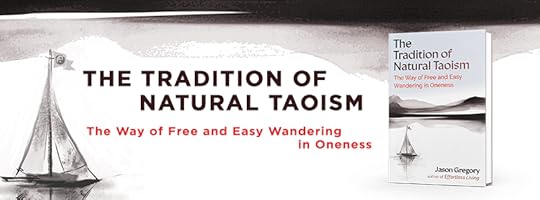 A Need for Structure
A Need for StructureThough it may seem counterintuitive to the way of Taoism, there is a growing need for structure and clarity on what Taoism is and, essentially, what it means to be Taoist. Despite the lucid, effortless nature of Taoism, we live in an age where some framework is needed to avoid a complete disfiguration of the tradition. It is not just about knowing what particular aspects of Taoism are or even experiencing them, but rather a complete understanding of the tradition is required that will transform your psychology and worldview.
Based on the way of the Tao, many different systems of cultivation were created over the thousands of years since the time of the great Taoist sages Lao-tzu and Chuang-tzu (369–286 BCE) in China’s Warring States period. Most notable are the cultivation methods of martial arts and Traditional Chinese Medicine (TCM) based on the holistic philosophy of Taoism. More precisely, these two branches are known in Chinese as Neidan, internal alchemy, and Waidan, external alchemy. The internal alchemy of Neidan is cultivated through the well-known martial and nonmartial arts spiritual practices of t’ai chi ch’uan (commonly known as t’ai chi), qi gong, baguazhang, xingyiquan, liuhebafa, and daoyin, which are all part of what is known as Nei Gong. The external alchemy of Waidan is practiced through herbal elixirs, specific foods, and other physiological practices all related to a holistic view of the human body and mind. Both Neidan and Waidan are based on the tenets of holism, which is the essence of Taoism, and a fundamental understanding of oneness that we will explore throughout this book.
Such traditions and lineages stemming from Taoist philosophy have developed and been refined for thousands of years. Personally, I am actively engaged in both Neidan and Waidan, and I can tell you from experience that if both are informed by their original philosophy of Taoism, then they will transform your life. A common misconception is a lot of people think if they practice t’ai chi ch’uan, for example, that this makes them a Taoist. Nothing could be further from the truth. That would be like saying anyone who practices hatha yoga is a Hindu. Hatha yoga is a small part of Hinduism, but you don’t have to practice hatha yoga to be Hindu. Likewise, you don’t have to practice t’ai chi ch’uan, qi gong, or Waidan to be Taoist. Will they deepen your understanding and experience of Tao? Yes, of course, especially if they are informed by Taoist philosophy. But are they necessary to follow the Tao? No.
Taoism is essentially an attitude, behavior, and worldview shaped by nature and not human socialization. Some people have an inherent aptitude for Taoism, and others need cultivation. Both depend on various factors: your genetic blueprint, your past life karma, your upbringing, culture, and religious indoctrination. Nevertheless, the Tao is ever-present, immanent within all experience, and at the same time transcends all experience. There is no one way to align yourself with the irreducible essence of Tao, though we could say Neidan, meditation practices, simplifying your life, and other practices are all effective methods. But, keep in mind, if you don’t understand the philosophy of Taoism, then no matter how much you practice meditation, for example, the experience and depth of the Tao within your being will not be realized.
Taoism requires a complete transformation via a dedication to unlearning the socialization we’ve all endured, which is not an easy feat. Taoism is a technology for deprogramming our minds from socialization so that we can finally return to our original natural state.
Returning to our basic disposition can, ironically, be one of the hardest things we can do, as physicist Fritjof Capra explains when describing Zen in relation to our innate naturalness:
The perfection of Zen is thus to live one’s everyday life naturally and spontaneously. When Po-chang was asked to define Zen, he said, “When hungry eat, when tired sleep.” Although this sounds simple and obvious, like so much in Zen, it is in fact quite a difficult task. To regain the naturalness of our original nature requires long training and constitutes a great spiritual achievement.
Taoism, like Zen, is a philosophy that guides us back to our true, original nature. As Capra mentioned, regaining this naturalness is more difficult than it seems. This is made even more difficult in the modern world because people are influenced by incorrect translations and cultural biases that we project onto Taoism like everything else. This leads to radical universalism, where Taoism is undermined by other cultures, especially Western cultures, with differing religions and social beliefs. Sure, it is true that Taoism adapts to anyone of any faith or disposition because when you understand the Tao, you realize that it encompasses all (even your God). But the main problem is that Taoism is treated as a secondary philosophy one applies to their religion, culture, or social disposition. For example, you can be Christian and follow the Tao because it encompasses all, every single part of your life. However, in its truest context, you can’t be a Christian and really follow the Tao because they are philosophically different. Someone could say they are Christian but abide by the philosophy and principles of Taoism, but that in fact makes them Taoist, not Christian. They are essentially Lao-tzu in Christian disguise.
The Dangers of Cultural Appropriation
To honestly understand Taoism, or to be Taoist, requires one to follow the way of nature, which actually runs counter to many other religions and social beliefs. Hence, the need for structure and understanding of true Taoism to avoid such cultural appropriation. And I know the clear rebuttal to this idea is that Taoism is a path that has no solidity, no dogma, and this is what makes it so successful. This is true and I don’t disagree. But to avoid ongoing cultural and traditional appropriation of Taoism, we need to have a thorough understanding of the philosophy without any additional beliefs that run counter to Taoism, stopping us from walking the spiritual path unfettered.
One of the primary states of consciousness in Taoism is Chuang-tzu’s free and easy wandering, which I will speak about at length in the last chapter of this book. If there is a blockage in our way from the natural experience of free and easy wandering, then that ought to be reevaluated under the microscope of Taoist philosophy. If we don’t have this mentality and our worldview is different from Taoism, then this is where the teachings slowly get warped over time until eventually the original teachings become devoid of meaning.
Taoist practitioner and independent scholar Eva Wong warned us about this cultural and traditional appropriation coming especially from the West in the 1990s. Wong used the Richard Wilhelm translation of the I Ching to illustrate her point of this distorting of Taoist knowledge. The Wilhelm translation comes with an amazing foreword by famous psychiatrist and psychoanalyst Carl Jung. I’ve read this version many times, and I do enjoy it. But what a young me didn’t know at the time was that this version of the I Ching is influenced by a tinge of Western thought. Wong revealed that the Wilhelm translation is, in part, seen through the lens of Jungian psychology, a Western viewpoint. How much so is debatable. But her point is that the translation of the I Ching is not interpreted from the Taoist view, nor is it put in its historical context. This acknowledgment of the lens and historical context of a translation is a point we must always consider when we read translations of any ancient text. To honestly translate the I Ching, it must be understood from its historical and philosophical context and not through the prism of another school of thought, such as Jungian psychology. Just this one revelation by Eva Wong has inspired me to explore other translations of the I Ching in the past decade. I am grateful I did. If we understand Taoism from its historical context, then its philosophy will shine forth because we understand what circumstances gave birth to it—the minds of the original Taoists. Taoism must be understood as it is with no filters.
We must have no cultural bias when learning a new tradition and enter into the endeavor with a completely open mind. And yes, that will be difficult, but that is what is needed to completely assimilate a new (or in Taoism’s case, the original) worldview. And so to be a genuine Taoist, you don’t see the world through your psychological and societal conditioning, but rather from the way of the ancients—more precisely from the way of Lao-tzu and Chuang-tzu.
Excerpt from my book, The Tradition of Natural Taoism: The Way of Free and Easy Wandering in Oneness.
Pre-order HERE
June 1, 2025
Reclaiming Self-Knowledge Online Retreat
Four Live Zoom Sessions | Every Saturday from July 26 – August 16
 Join the Shanti Sangha with Jason Gregory for this mid-year online retreat on the nature of Self-Knowledge. In this retreat we will explore the ancient teachings of Atmabodha (Self-Knowledge), the philosophy of Nondualistic Vedanta. Jason will draw on the sixty-eight verses of the Atmabodha text to guide the participants to a greater understanding of this wisdom so that we can all reclaim Self-Knowledge.
Join the Shanti Sangha with Jason Gregory for this mid-year online retreat on the nature of Self-Knowledge. In this retreat we will explore the ancient teachings of Atmabodha (Self-Knowledge), the philosophy of Nondualistic Vedanta. Jason will draw on the sixty-eight verses of the Atmabodha text to guide the participants to a greater understanding of this wisdom so that we can all reclaim Self-Knowledge.
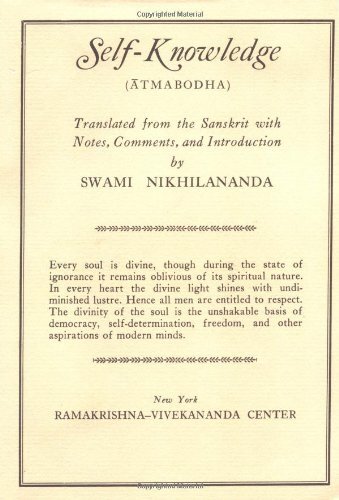 Each class is in a traditional satsang format which will consist of a 1-hour dialogue on the teachings by Jason and then a 30-minute Q&A about these teachings. This will be a great opportunity to explore these teachings together in a place dedicated to the teachings with other sincere spiritual aspirants in the Shanti Sangha.
Each class is in a traditional satsang format which will consist of a 1-hour dialogue on the teachings by Jason and then a 30-minute Q&A about these teachings. This will be a great opportunity to explore these teachings together in a place dedicated to the teachings with other sincere spiritual aspirants in the Shanti Sangha.Price and Schedule
Cost is $200 USD. Classes will be held at 11:00 AM – 12:30 PM US Eastern time. A Zoom invitation with password will be sent Thursday prior to each weekend. A video recording of the class will be sent to your email address and the link will be available for 30 days.
To secure your spot, please make payment in full with your name and email address to the following link.
Course registration is valid until July 23, 2025.
Refund PolicyAfter July 23, 2025, payment is nonrefundable. This refund policy is in place because from July 23, 2025 all of the retreat material will have been set for the expected number of attendees. There will be no refund after July 23 as a result.
COURSE REGISTERATIONApril 22, 2025
FOOTSTEPS OF THE ARHATS THAILAND TOUR 2026
THE SACRED YATRA EXPERIENCE with Jason Gregory
JANUARY 2026
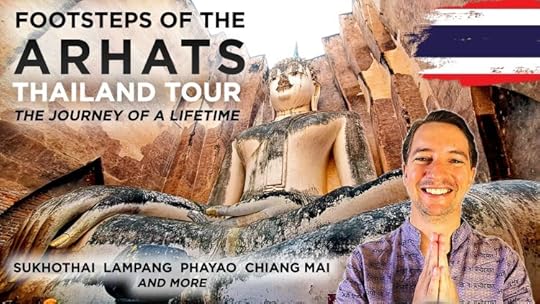
The Sacred Yatra Experience is the ultimate pilgrimage of the spiritual traditions of Asia. The Footsteps of the Arhats Thailand Tour is one of the most unique travel experiences in the world. You can travel with author, philosopher, and teacher Jason Gregory on a mystical tour of Thailand to explore and trace the footsteps the Thai hermits and mystics. Get unique insights into Jason’s knowledge of the East and the memory of the masters and scared places you will visit. Jason wishes to take people to the most sacred places in Thailand to show that the ancient Hindu and Buddhist cultures are thriving. But this can only be experienced by those willing to join him on this pilgrimage of the heart.
1. About our tour to Thailand
Our 10-day itinerary includes visits to the most breathtakingly beautiful and mystical places in Thailand. We will travel through Thailand to visit the most important sacred places in Thai history related to Theravada Buddhism and Hinduism. Most people never get the chance to experience face-to-face the archaic origins and sacred sites of Thailand’s spiritual culture. But on this journey, you will get a once in a lifetime opportunity to actually feel the ancient living spiritual culture that is still thriving in the sacred places you will visit. You will also get the chance to meet real-life mystics and mingle with the beautiful people of Thailand.
What is more, during the tour you will take part in private discourses given by Jason Gregory. He will show you the significance of how the great Eastern spiritual traditions can help you live more harmoniously in the modern world. You will begin to understand the deep wisdom the mystics of the East expounded for you to find true happiness and fulfilment in this life. And this is the reason for joining Jason Gregory on his tour of Thailand to follow in the footsteps of the great Buddhist masters.
This is a once-in-a-life-time experience!
2. ITINERARYDay 1 – Arrival to Sukhothai, Thailand (January 22, 2026)
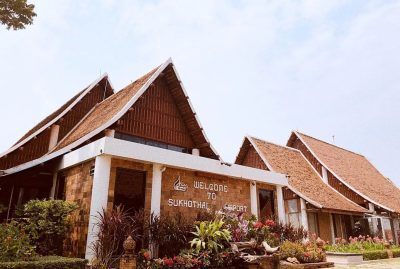
From Bangkok, there are only two flights daily to Sukhothai. Arrival at Sukhothai Airport in Sukhothai, Thailand. A representative of the tour team will welcome guests at the Sukhothai Airport and transport them to the hotel. After the check-in process at the hotel, guests will have time to rest and recuperate while all guests arrive at the hotel.
Day 2 – Ancient Sukhothai Historical Park (January 23, 2026)
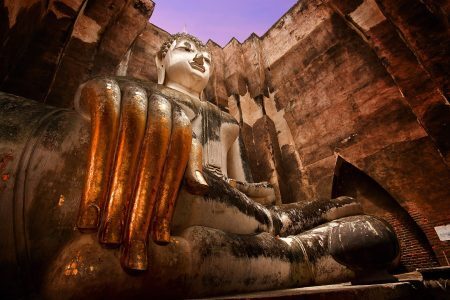
On day 2, we will rise early and visit Mahathat Temple for a sunrise meditation. Later in the morning after breakfast, we will ride cycles around the ancient Sukhothai Historical Park, exploring the Hindu and Buddhist ruins. The ruins of Sukhothai, literally ‘dawn of happiness’, is the capital of the Sukhothai Kingdom in the 13th and 14th centuries.
In the evening, we will explore the local markets and mingle with the community of Sukhothai.
 Day 3 – Wat Phra Sri Rattana Mahathat Rajaworaviharn and Travel to Lampang (January 24, 2026)
Day 3 – Wat Phra Sri Rattana Mahathat Rajaworaviharn and Travel to Lampang (January 24, 2026) 
On day 3, we will travel to Lampang. On the way, we will stop by the sacred Wat Phra Sri Rattana Mahathat Rajaworaviharn Temple. Wat Phra Si Rattana Mahathat Ratchaworawihan is a first-class royal temple in Si Satchanalai, Sukhothai, Thailand.
In the afternoon, we will arrive to Lampang and visit the famous Lampang night markets to experience the beautiful Thai culture.
Day 4 – Wat Phra That Lampang Luang, Sky Pagodas, and Travel to Phayao (January 25, 2026)

On day 4, we will travel to Phayao. But before that, we will visit Wat Phra That Lampang Luang in the morning. On the road to Phayao, we will stop at the iconic Sky Pagodas where ancient hermits used to renounce the world.
In the evening, we will enjoy dinner over the famous Phayao Lake, the largest freshwater lake in the northern region and the fourth largest in the country.
Day 5 – Wat Analayo Thipphayaram, Phutthakhaya Pagoda, and the Submerged Temple (January 26, 2026)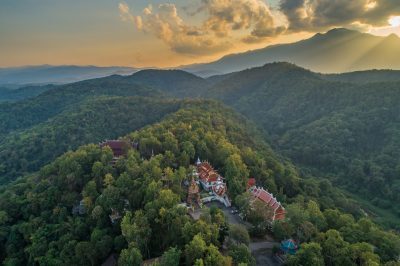
In the morning on day 5, we will travel to Wat Analayo Thipphayaram. The temple is beautifully nestled in the jungle. It is a very large temple complex on the slopes of Doi Luang, overlooking the Phayao Lake. A myth involving a monk called Phra Achan Phibun Sumangkhalo from Wat Rattanawanaram in Phayao had a dream and vision that resulted in the establishment of a temple on the mountain on the other side of the Kwan Phayao.
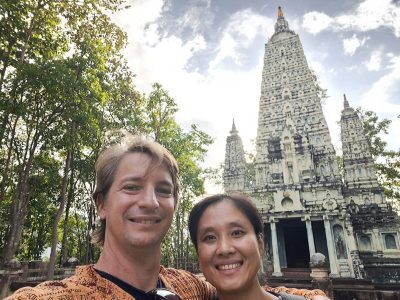
Next, we will travel to Phutthakhaya Pagoda which is a replica of the Mahabodhi Temple where the Buddha attained enlightenment. This temple is in the middle of the jungle and feels deserted.
In the afternoon, we will get a boat ride over the submerged temple, Wat Tilok Aram. Submerged beneath the Phayao Lake is the 500-year-old temple. A stone inscription records that King Tilokkarad commanded Chao San Hua, the King of Muang Phayao, to establish the temple in 1476 – 1486 as an offering to the greatest king in the region. The temple stood for nearly five centuries until an irrigation project in 1939 inundated the temple, along with more than 10 other ancient sites.
We will end the day relaxing in this scenic town as we enjoy each other’s company.
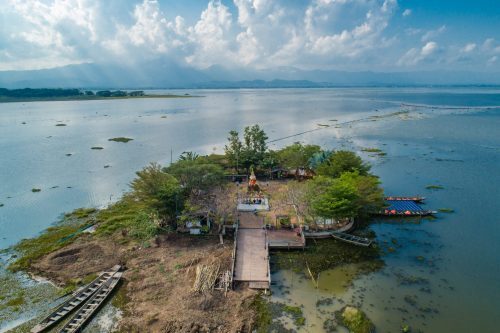 Day 6 – Travel to Chiang Dao and Wat Tham Pha Plong (January 27, 2026)
Day 6 – Travel to Chiang Dao and Wat Tham Pha Plong (January 27, 2026) 
On day 6, we will travel to Chiang Dao in the morning.
In the afternoon, we will visit Wat Tham Pha Plong, a monastery nestled in the mountains of Chiang Dao.
Day 7 – Wat Tham Chiang Dao Cave Temple, Wat Ban Den, and Travel to Chiang Mai (January 28, 2026)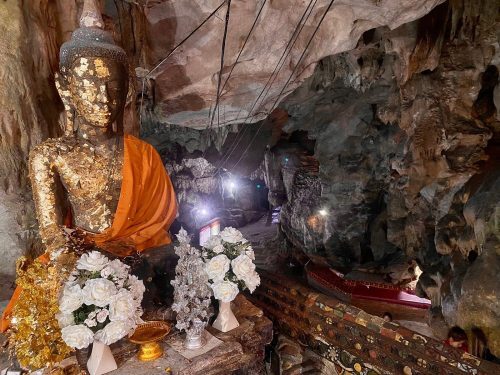
On day 7, after breakfast we will explore the famous cave temple, Wat Tham Chiang Dao. According to legend, the sage Phra Rama Rishi, renowned for his profound meditation, invoked divine beings to create extraordinary artifacts, such as golden Buddhas and mythical creatures. These treasures were subsequently concealed within the depths of Chiang Dao Cave, guarded by the formidable deity Chao Luang Kham Daeng.
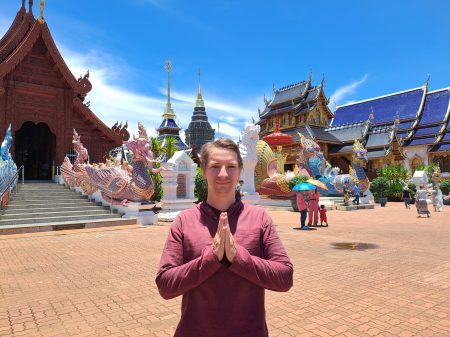
In the afternoon, on the way to Chiang Mai, we will visit the magnificent temple, Wat Ban Den. Known for its stunning architecture, the temple is a blend of traditional Lanna style and intricate modern craftsmanship.
Later in the day, we will arrive to Chiang Mai to enjoy the sights and sounds of this ancient city.
Day 8 – Wat Umong and Wat Phra That Doi Saket (January 29, 2026)
On day 8, we will rise early to meditate in the 700-year-old temple, Wat Umong. The temple was built in 1297 by King Mangrai of the Lan Na dynasty. The temple is famous for its ancient tunnels and large chedi. There are tunnels with Buddhist images below the chedi which can be easily explored. These tunnels were supposedly built by the King and painted with bush scenes so they could keep a famous but mentally deranged monk within the grounds of the monastery as he had a habit of just wandering off into the bush for days on end.
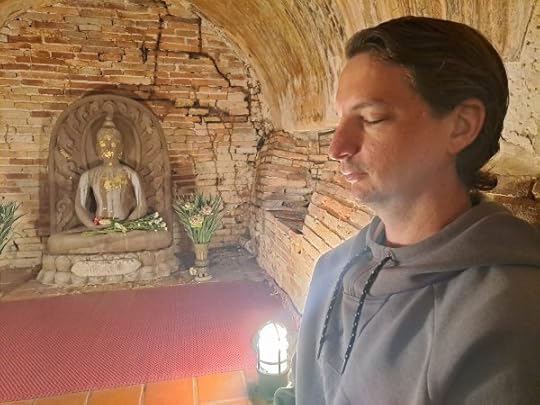

In the afternoon, we will visit Wat Phra That Doi Saket, which is one of the most breathtaking temples in the Chiang Mai region. According to legend, the Buddha visited the mountain (later Doi Saket) and offered his hair upon a nāga. This significant event is believed to have marked the sacred site where the temple was subsequently constructed. The temple is believed to have been built in 1112.
Day 9 – Mon Payanaga Raja, Muang On Cave with Natural Shiva Lingam, and Rest and Relax (January 30, 2026)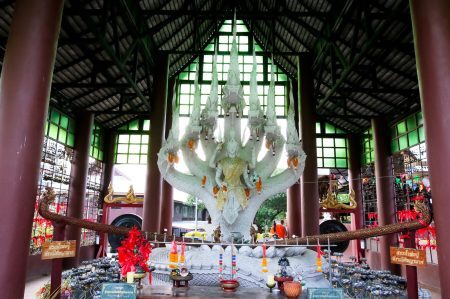
On day 9, we will rise early and make our way to Mon Payanaga Raja, a temple dedicated to nagas which is full of Buddhist and Hindu deities.
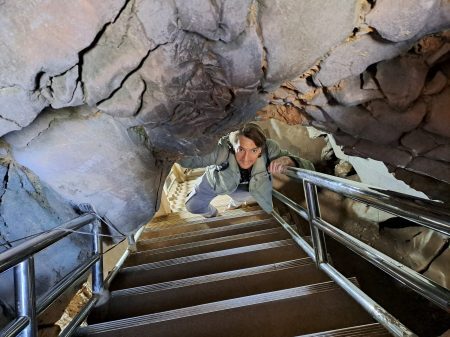
Next, we will visit one of the biggest cave systems in Chiang Mai, Muang On Cave. This cave is home to many grottos, shrines, and even a 30-foot-long reclining Buddha. But the heart of the cave is a naturally formed Shiva lingam that is unknown by most people.
For the rest of the day, we will enjoy each other’s company as we explore the amazing culture of Chiang Mai.
 Day 10 – Depart Chiang Mai (January 31, 2026)
Day 10 – Depart Chiang Mai (January 31, 2026) 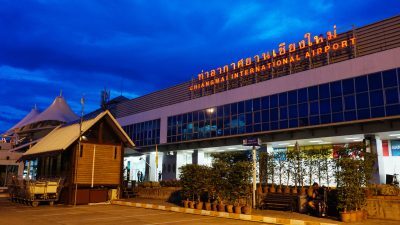
After an epic and sacred adventure together, it is time to say goodbye to Thailand. After breakfast, we will be flying back to our homes.
The order of places that we are going to visit might be modified.
3. Terms & ConditionsONLY SPECIAL TWO TOUR COMBO TICKETS ARE AVAILABLE NOW. REGULAR THAILAND TOUR TICKETS WILL GO ON SALE JULY 1.
VISIT HERE TO SEE DETAILS ABOUT THE LADAKH TOUR 2025.
* Price per person: $3700 USD (or equivalent in GBP/EUR/AUD) for one room.
* Early bird single ticket: $3500 USD (or equivalent in GBP/EUR/AUD) for one room. Available until September 15, 2025.
* Couple Special: $6900 USD (or equivalent in GBP/EUR/AUD) for 2 people to share double room.
* Couple Early Bird: $6800 (or equivalent in GBP/EUR/AUD) for 2 people to share double room. Available until September 15, 2025.
*SPECIAL TWO TOUR COMBO SINGLE (save $800): $6600 USD per person (or equivalent in GBP/EUR/AUD) for one room on both the Ladakh and Thailand tours. Available until June 25, 2025.
*SPECIAL TWO TOUR COMBO DOUBLE (save $900): $13000 USD (or equivalent in GBP/EUR/AUD) for 2 people to share double room on both the Ladakh and Thailand tours. Available until June 25, 2025.
* After November 22, 2025 deposit or full payment are nonrefundable. This refund policy is in place because from November 22, 2025 all accommodation and traveling schedule will be booked. There will be no refund after November 22, 2025 as a result.
Price Includes:
* Jason Gregory as your tour host
* 9 nights accommodation at good hotels in Thailand
* Transfers in air-conditioned private transport
* Entrance tickets to all sites
Not Included:
* International flight to India and return flight back to your country
* Domestic flights within Thailand
* Visas and insurance. The onus is on the traveler to ensure that passports, visas and other travel documentation are valid and in order. Insurance is mandatory for this trip.
* Meals during the tour
4. Payment Schedule
* Only $1500 USD deposit during booking for a single ticket (or equivalent in GBP/EUR/AUD).
* Only $3000 USD deposit during booking for a couple ticket (or equivalent in GBP/EUR/AUD).
* Only $3000 USD deposit during booking for a special two tour combo single ticket for both Ladakh and Thailand tours (or equivalent in GBP/EUR/AUD).
* Only $6000 USD deposit during booking for a special two tour combo couple ticket for both Ladakh and Thailand tours (or equivalent in GBP/EUR/AUD).
* Full payment must be received by November 22, 2025.
* November 22, 2025, deposit or full payment are nonrefundable. This refund policy is in place because from November 22, 2025 all accommodation and traveling schedule will be booked. There will be no refunds after November 22, 2025 as a result.
5. Signed Acknowledgment of Risks and Release of Liability is Required
*This document will be sent personally after booking and must be signed to attend the tour.
6. Health and Vaccinations
We are not medically qualified and so we recommend that you speak to your doctor or nearest health professional for advice concerning recommended vaccinations. For more advice on vaccinations, you can also visit https://www.fitfortravel.nhs.uk/home.
If you have any physical limitations that might impact your ability to participate in the planned tour activities, it’s essential that you make us aware as soon as possible so that we can discuss this with you.
7. Insurance
It is a condition of joining our tours that you have suitable travel insurance in place, and we cannot accept travelers without insurance. All policies differ in terms of what they will cover, but as a minimum you need medical and health cover which will cover you for the whole time that you are away.
Please note that government travel warnings often affect the validity of your travel insurance, and you should check this with your insurance company.
During booking you should prepare personal details, date of birth, address, phone number, Email address, passport number, Passport Expiration Date (example mm/dd/yyyy). These details you should send via below contact form.
To secure your spot, send a message via below contact form for payment details.
We encourage you to book this tour as soon as possible, because the number of places is limited!
Please contact us below for more information and for details.
BOOK A SPOT / TOUR INQUIRY Please enable JavaScript in your browser to complete this form.Please enable JavaScript in your browser to complete this form.Full Name *Email *What is your inquiry? *GeneralConsultationMentorship ProgramsTourCourse RegisterationSponsorshipTitle *Message *SEND[image error] SHAREFOOTSTEPS OF THE MAHASIDDHAS LADAKH TOUR 2025
THE SACRED YATRA EXPERIENCE with Jason Gregory
AUGUST 2025
 IMPORTANT NOTELadakh is a high altitude region, ranging from 9,800 to 18,000 feet (3,000 to 5,500 meters). The majority of our tour will take place at 11,550 feet (3500 meters) high. Altitude sickness, physical strain, and limited medical access are potential hazards. Participants must have a good level of physical fitness and consult a doctor to ensure they are medically fit for high-altitude travel. The Ladakhi Government recommends all tourists to take a 48 hours resting period after arrival. As a result, the first 2 days of our tour has been allocated for rest and hydration. By joining this tour, you acknowledge these risks and confirm your fitness. A signed High Altitude Risk Disclaimer for Travel to Ladakh and Acknowledgment of Risks and Release of Liability is required. Document will be provided upon booking.
IMPORTANT NOTELadakh is a high altitude region, ranging from 9,800 to 18,000 feet (3,000 to 5,500 meters). The majority of our tour will take place at 11,550 feet (3500 meters) high. Altitude sickness, physical strain, and limited medical access are potential hazards. Participants must have a good level of physical fitness and consult a doctor to ensure they are medically fit for high-altitude travel. The Ladakhi Government recommends all tourists to take a 48 hours resting period after arrival. As a result, the first 2 days of our tour has been allocated for rest and hydration. By joining this tour, you acknowledge these risks and confirm your fitness. A signed High Altitude Risk Disclaimer for Travel to Ladakh and Acknowledgment of Risks and Release of Liability is required. Document will be provided upon booking. The Sacred Yatra Experience is the ultimate pilgrimage of the spiritual traditions of Asia. The Footsteps of the Mahasiddhas Ladakh Tour is one of the most unique travel experiences in the world. You can travel with author, philosopher, and teacher Jason Gregory on a mystical tour of Ladakh to explore and trace the footsteps the Himalayan hermits and mystics. Get unique insights into Jason’s knowledge of the East and the memory of the masters and scared places you will visit. Jason wishes to take people to the most sacred places in Ladakh to show that the ancient Hindu and Buddhist cultures are thriving. But this can only be experienced by those willing to join him on this pilgrimage of the heart.
1. About our tour to Ladakh
Our 11-day itinerary includes visits to the most breathtakingly beautiful and mystical places in Ladakh. We will travel through Ladakh to visit the most important sacred places in Ladakhi history. Most people never get the chance to experience face-to-face the archaic origins and sacred sites of Ladakh’s spiritual culture. But on this journey, you will get a once in a lifetime opportunity to actually feel the ancient living spiritual culture that is still thriving in the sacred places you will visit. You will also get the chance to meet real-life mystics and mingle with the beautiful people of Ladakh.
What is more, during the tour you will take part in private discourses given by Jason Gregory. He will show you the significance of how the great Eastern spiritual traditions can help you live more harmoniously in the modern world. You will begin to understand the deep wisdom the mystics of the East expounded for you to find true happiness and fulfilment in this life. And this is the reason for joining Jason Gregory on his tour of Ladakh to follow in the footsteps of such great Buddhist masters as Padmasambhava. This is a once-in-a-life-time experience!
2. ITINERARYDay 1 – Arrival to Leh, Ladakh (August 24, 2025)[image error]

Arrival at Kushok Bakula Rimpochee Airport in Leh. A representative of the tour team will welcome guests at the Kushok Bakula Rimpochee Airport and transport them to the hotel. After the check-in process at the hotel, guests will have time to rest and recuperate while all guests arrive at the hotel. It will be imperative for all guests to rest as much as possible in the first two days to acclimatize to the altitude.
Day 2 – Rest, Relax, and Acclimatize (August 25, 2025)On day 2, we will all rest and acclimatize to the altitude. We will explore the Leh Market area to enjoy the local cuisine and explore the local markets as we adjust to the altitude throughout the day.
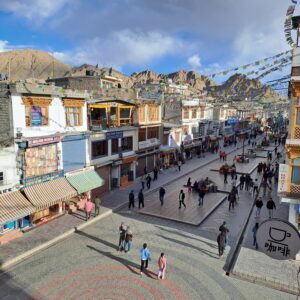 Day 3 – Leh Palace, Tsemo Maitreya Monastery, Spituk Monastery, and Stok Monastery (August 26, 2025)
Day 3 – Leh Palace, Tsemo Maitreya Monastery, Spituk Monastery, and Stok Monastery (August 26, 2025) 
On day 3, we officially hit the road and begin our journey. We will explore four of the most significant locations in the Leh region. In the morning, we will visit the Leh Palace, the former royal palace overlooking the city of Leh. It was constructed circa 1600 AD by Sengge Namgyal. The palace was abandoned when Dogra forces took control of Ladakh in the mid-19th century and forced the royal family to move to Stok Palace.
Next in the morning, we will visit the Tsemo Maitreya Monastery, which was founded by King Tashi Namgyal (1555-1575) of Ladakh. It has a three-story high gold statue of Maitreya Buddha and ancient manuscripts and frescoes. It is situated near the Tsemo Castle.
In the afternoon, we will visit Spituk Monastery. This monastery has one of the most breathtaking views of the airports, where you can witness planes flying in and out from Leh. The site of Spituk was blessed by the Arhat Nyimagung. The monastery is home to 100 monks and a giant statue of Kali (unveiled during the annual festival).
Late in the afternoon, Jason will take you to one of his favorite tea shops in the world at Stok Monastery, with the most breathtaking views of the Himalayas you will see while enjoying a tea.

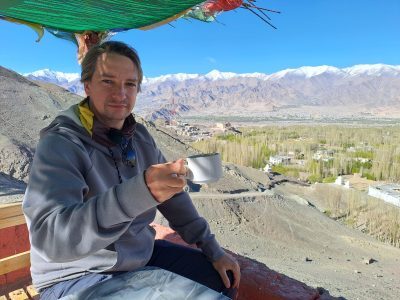 Day 4 – Travel to Alchi and Alchi Monastery (August 27, 2025)
Day 4 – Travel to Alchi and Alchi Monastery (August 27, 2025) 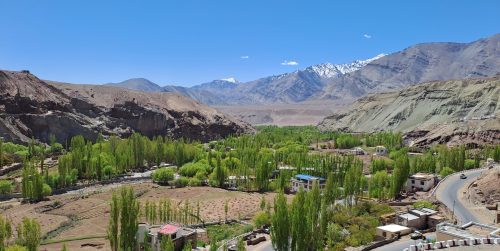
Alchi is a village located on the banks of the Indus River 70km (43.49miles) downstream from the capital, Leh. Unlike the other monasteries in Ladakh, Alchi is situated on lowland, not on a hilltop. The village is famous for the existence of one of the oldest monasteries in Ladakh, Alchi Monastery, mainly known for its magnificent and well-preserved 11th or 12th-century wall paintings, all in an Indo-Himalayan style. The monastery houses thousands of rare and unique sculptures and paintings dating back to 11th century Western Tibet.
On day 4, we will travel to the small village of Alchi and visit one of the oldest monasteries in Ladakh, the Alchi Monastery.
Day 5 – Likir Monastery and Travel to Thiksey (August 28, 2025)On day 5, we will travel to Thiksey, but along the way, we will visit the Likir Monastery, the famous Klu-kkhyil (meaning “water spirits” who once lived there) monastery. The Likir Monastery was first built in the 11th century and was rebuilt in the 18th century, and currently has a 25-foot-tall (7.6 m) gold-covered Maitreya Buddha statue.
We will arrive in Thiksey village in the afternoon to enjoy the tranquil views and beauty of this small community.
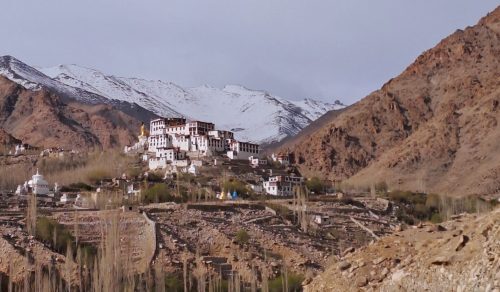
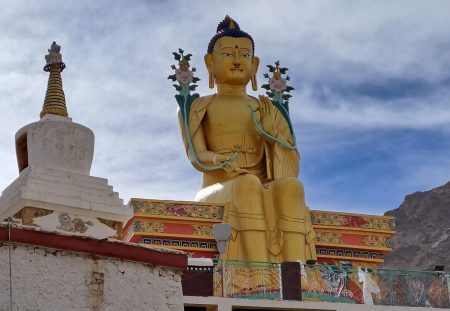 Day 6 – Thiksey Monastery and Shey Palace (August 29, 2025)
Day 6 – Thiksey Monastery and Shey Palace (August 29, 2025) 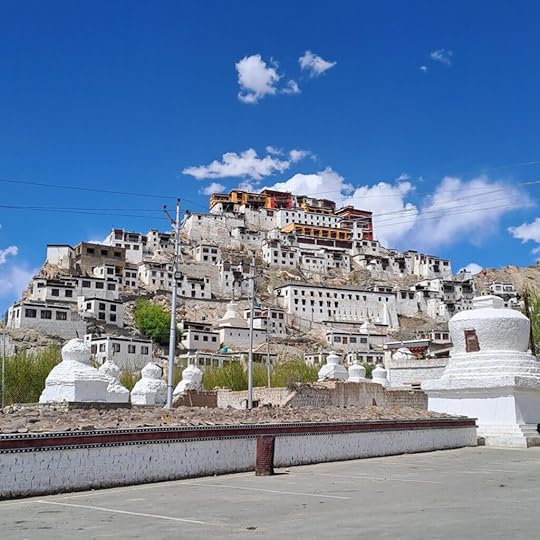
On day 6, we will rise early and attend the morning service at Thiksey Monastary to observe the morning puja and meditation. Thiksey Monastery is one of the most scenic in all of Ladakh and has a spiritual ambience second to none.
In the afternoon, we will visit Shey Palace. Shey was the summer capital of Ladakh in the past. It contains a huge Shakyamuni Buddha statue. It is the second largest Buddha statue in Ladakh.
 Day 7 – Hemis Monastery, Chemrey Monastery, and Takthok Monastery (August 30, 2025)
Day 7 – Hemis Monastery, Chemrey Monastery, and Takthok Monastery (August 30, 2025) 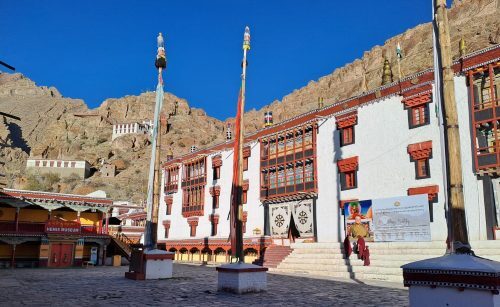
On day 7, we will rise early and attend the morning service at Hemis Monastery to observe morning puja and meditation. Hemis Monastery is famous for being a place of meditation and pilgrimage for some of the most famous Mahasiddhas to have ever lived, and for also having a direct connection to the life of Jesus. Hemis Monastery already existed before the 11th century. Nāropā, the pupil of the yogi Tilopa, and teacher of the translator Marpa, was connected with this monastery. A translation of Naropa’s biography has been found in Hemis monastery. It has been translated by A. Grünwedel (Năro und Tilo, Festschrift Ernst Kuhn, Munich 1916). In 1887, Nicolas Notovitch wrote a book claiming to be the translation of a document held in Hemis Library that states Jesus had spent his unknown years at the Hemis monastery.

In the afternoon, we will visit Chemrey Monastery. From a distance, Chemrey Monastery is one of the most beautiful to visually witness. The monastery has a notable high Padmasambhava statue. It also contains a valuable collection of scriptures.
To end the day, we will visit Takthok Monastery. The name is Takthok, literally meaning ‘rock-roof’ was named because both its roof and walls are made of rock. It belongs to the Nyingma tradition of Tibetan Buddhism and approximately 55 lamas reside there. The monastery was founded around the mid-16th century during the reign of Tsewang Namgyal I (1575-1595) on a mountainside around a cave in which Padmasambhava is said to have meditated in the 8th century.
 Day 8 – Travel to Diskit and Khardung La Pass (August 31, 2025)
Day 8 – Travel to Diskit and Khardung La Pass (August 31, 2025) 
On day 8, we will travel to Diskit. On the way, we will travel over Khardung La pass. The elevation of Khardung La is 5,359 m (17,582 ft) and is one of the highest in the world. We will stop for a brief moment to take in the once–in–a–lifetime views. Later in the day we will arrive in the majestic Nubra Valley, home to the Diskit village, where we will rest and relax.
Day 9 – Diskit Monastery (September 1, 2025)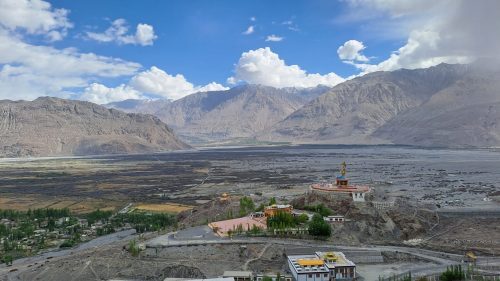
On day 9, we will rise early and attend the morning service at Diskit Monastery to observe morning puja and meditation. Diskit Monastery is the oldest and largest Buddhist monastery in Nubra Valley. For the rest of the day, we will enjoy the natural beauty of the Nubra Valley.
Day 10 – Travel Back to Leh (September 2, 2025)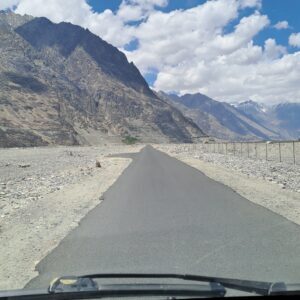
On day 10, we will travel back to Leh. We will enjoy each other’s company on the last day before everyone leaves the next day.
Day 11 – Depart Leh, Ladakh (September 3, 2025)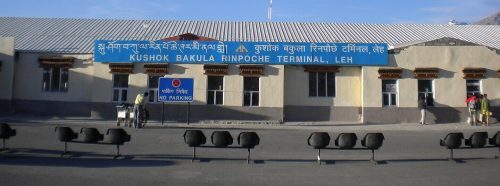
After an epic and sacred adventure together, it is time to say goodbye to Ladakh. After breakfast, we will be flying back to our homes.
The order of places that we are going to visit might be modified.
3. Terms & Conditions* Price per person: $3700 USD (or equivalent in GBP/EUR/AUD) for one room.
* Early bird single ticket: $3500 USD (or equivalent in GBP/EUR/AUD) for one room. Available until May 25, 2025.
* Couple Special: $6900 USD (or equivalent in GBP/EUR/AUD) for 2 people to share double room.
* Couple Early Bird: $6800 (or equivalent in GBP/EUR/AUD) for 2 people to share double room. Available until May 25, 2025.
*SPECIAL TWO TOUR COMBO SINGLE (save $800): $6600 USD per person (or equivalent in GBP/EUR/AUD) for one room on both the Ladakh and Thailand tours. Available until June 25, 2025.
*SPECIAL TWO TOUR COMBO DOUBLE (save $900): $13000 USD (or equivalent in GBP/EUR/AUD) for 2 people to share double room on both the Ladakh and Thailand tours. Available until June 25, 2025.
* After June 25, 2025 deposit or full payment are nonrefundable. This refund policy is in place because from June 25, 2025 all accommodation and traveling schedule will be booked. There will be no refund after June 25, 2025 as a result.
Price Includes:
* Jason Gregory as your tour host
* 10 nights accommodation at good hotels in Ladakh
* Transfers in air-conditioned private transport
* Entrance tickets to all sites
Not Included:
* International flight to India and return flight back to your country
* Domestic flights within India
* Visas and insurance. The onus is on the traveler to ensure that passports, visas and other travel documentation are valid and in order. Insurance is mandatory for this trip.
* Meals during the tour
4. Payment Schedule
* Only $1500 USD deposit during booking for a single ticket (or equivalent in GBP/EUR/AUD).
* Only $3000 USD deposit during booking for a couple ticket (or equivalent in GBP/EUR/AUD).
* Only $3000 USD deposit during booking for a special two tour combo single ticket for both Ladakh and Thailand tours (or equivalent in GBP/EUR/AUD).
* Only $6000 USD deposit during booking for a special two tour combo couple ticket for both Ladakh and Thailand tours (or equivalent in GBP/EUR/AUD).
* Full payment must be received by June 25, 2025.
* June 25, 2025, deposit or full payment are nonrefundable. This refund policy is in place because from June 25, 2025 all accommodation and traveling schedule will be booked. There will be no refunds after June 25, 2025 as a result.
5. Signed High Altitude Risk Disclaimer for Travel to Ladakh and Acknowledgment of Risks and Release of Liability is required
*This document will be sent personally after booking and must be signed to attend the tour.
6. Health and Vaccinations
We are not medically qualified and so we recommend that you speak to your doctor or nearest health professional for advice concerning recommended vaccinations. For more advice on vaccinations you can also visit https://www.fitfortravel.nhs.uk/home.
If you have any physical limitations that might impact your ability to participate in the planned tour activities, it’s essential that you make us aware as soon as possible so that we can discuss this with you.
7. InsuranceIt is a condition of joining our tours that you have suitable travel insurance in place, and we cannot accept travelers without insurance. All policies differ in terms of what they will cover, but as a minimum you need medical and health cover which will cover you for the whole time that you are away.
Please note that government travel warnings often affect the validity of your travel insurance, and you should check this with your insurance company.
During booking you should prepare personal details, date of birth, address, phone number, Email address, passport number, Passport Expiration Date (example mm/dd/yyyy). These details you should send to via below contact page.
To secure your spot, send a message via below contact form for payment details.
We encourage you to book this tour as soon as possible, because the number of places is limited!
Please contact us for more information and for details below.
BOOK A SPOT / TOUR INQUIRY Please enable JavaScript in your browser to complete this form.Please enable JavaScript in your browser to complete this form.Full Name *Email *What is your inquiry? *GeneralConsultationMentorship ProgramsTourCourse RegisterationSponsorshipTitle *Message *SEND[image error] SHAREFootsteps of the MAHASIDDHAS LADAKH TOUR 2025
THE SACRED YATRA EXPERIENCE with Jason Gregory
AUGUST 2025
 IMPORTANT NOTETravel to Ladakh involves significant risks due to its high altitude, ranging from 9,800 to 18,000 feet (3,000 to 5,500 meters). Altitude sickness, physical strain, and limited medical access are potential hazards. Participants must have a good level of physical fitness and consult a doctor to ensure they are medically fit for high-altitude travel. By joining this tour, you acknowledge these risks, confirm your fitness. Signed High Altitude Risk Disclaimer for Travel to Ladakh and Acknowledgment of Risks and Release of Liability is required. Document will be provided upon booking.
IMPORTANT NOTETravel to Ladakh involves significant risks due to its high altitude, ranging from 9,800 to 18,000 feet (3,000 to 5,500 meters). Altitude sickness, physical strain, and limited medical access are potential hazards. Participants must have a good level of physical fitness and consult a doctor to ensure they are medically fit for high-altitude travel. By joining this tour, you acknowledge these risks, confirm your fitness. Signed High Altitude Risk Disclaimer for Travel to Ladakh and Acknowledgment of Risks and Release of Liability is required. Document will be provided upon booking. The Sacred Yatra Experience is the ultimate pilgrimage of the spiritual traditions of Asia. The Ladakh Tour – The Journey of a Lifetime is one of the most unique travel experiences in the world. You can travel with author, philosopher, and teacher Jason Gregory on a mystical tour of Ladakh to explore and trace the footsteps the Himalayan hermits and mystics. Get unique insights into Jason’s knowledge of the East and the memory of the masters and scared places you will visit. Jason wishes to take people to the most sacred places in Ladakh to show that the ancient Hindu and Buddhist cultures are thriving. But this can only be experienced by those willing to join him on this pilgrimage of the heart.
1. About our tour to Ladakh
Our 11-day itinerary includes visits to the most breathtakingly beautiful and mystical places in Ladakh. We will travel through Ladakh to visit the most important sacred places in Ladakhi history. Most people never get the chance to experience face-to-face the archaic origins and sacred sites of Ladakh’s spiritual culture. But on this journey, you will get a once in a lifetime opportunity to actually feel the ancient living spiritual culture that is still thriving in the sacred places you will visit. You will also get the chance to meet real-life mystics and mingle with the beautiful people of Ladakh.
What is more, during the tour you will take part in private discourses given by Jason Gregory. He will show you the significance of how the great Eastern spiritual traditions can help you live more harmoniously in the modern world. You will begin to understand the deep wisdom the mystics of the East expounded for you to find true happiness and fulfilment in this life. And this is the reason for joining Jason Gregory on his tour of Ladakh to follow in the footsteps of such great Buddhist masters as Padmasambhava. This is a once-in-a-life-time experience!
2. ITINERARYDay 1 – Arrival to Kathmandu (November 12, 2024)[image error]

Arrival at Kushok Bakula Rimpochee Airport in Ladakh. A representative of the tour team will welcome guests at the Kushok Bakula Rimpochee Airport and transport them to the hotel. After the check-in process at the hotel, guests will have time to rest and recuperate while all guests arrive at the hotel. It will be imperative for all guests to rest as much as possible in the first two days to acclimatize to the altitude.
Day 2 – Rest, Relax, and Acclimatize (August 25, 2025)On day 2, we will all rest and acclimatize to the altitude. We will explore the Leh Market area to enjoy the local cuisine and explore the local markets as we adjust to the altitude throughout the day.
 Day 3 – Leh Palace, Tsemo Maitreya Monastery, Spituk Monastery, and Stok Monastery (August 26, 2025)
Day 3 – Leh Palace, Tsemo Maitreya Monastery, Spituk Monastery, and Stok Monastery (August 26, 2025) 
On day 3, we officially hit the road and begin our journey. We will explore four of the most significant locations in the Leh region. In the morning, we will visit the Leh Palace, the former royal palace overlooking the city of Leh. It was constructed circa 1600 AD by Sengge Namgyal. The palace was abandoned when Dogra forces took control of Ladakh in the mid-19th century and forced the royal family to move to Stok Palace.
Next in the morning, we will visit the Tsemo Maitreya Monastery, which was founded by King Tashi Namgyal (1555-1575) of Ladakh. It has a three-story high gold statue of Maitreya Buddha and ancient manuscripts and frescoes. It is situated near the Tsemo Castle.
In the afternoon, we will visit Spituk Monastery. This monastery has one of the most breathtaking views of the airports, where you can witness planes flying in and out from Leh. The site of Spituk was blessed by the Arhat Nyimagung. The monastery is home to 100 monks and a giant statue of Kali (unveiled during the annual festival).
Late in the afternoon, Jason will take you to one of his favorite tea shops in the world at Stok Monastery, with the most breathtaking views of the Himalayas you will see while enjoying a tea.

 Day 4 – Travel to Alchi and Alchi Monastery (August 27, 2025)
Day 4 – Travel to Alchi and Alchi Monastery (August 27, 2025) 
Alchi is a village located on the banks of the Indus River 70km (43.49miles) downstream from the capital, Leh. Unlike the other monasteries in Ladakh, Alchi is situated on lowland, not on a hilltop. The village is famous for the existence of one of the oldest monasteries in Ladakh, Alchi Monastery, mainly known for its magnificent and well-preserved 11th or 12th-century wall paintings, all in an Indo-Himalayan style. The monastery houses thousands of rare and unique sculptures and paintings dating back to 11th century Western Tibet.
On day 4, we will travel to the small village of Alchi and visit one of the oldest monasteries in Ladakh, the Alchi Monastery.
Day 5 – Likir Monastery and Travel to Thiksey (August 28, 2025)On day 5, we will travel to Thiksey, but along the way, we will visit the Likir Monastery, the famous Klu-kkhyil (meaning “water spirits” who once lived there) monastery. The Likir Monastery was first built in the 11th century and was rebuilt in the 18th century, and currently has a 25-foot-tall (7.6 m) gold-covered Maitreya Buddha statue.
We will arrive in Thiksey village in the afternoon to enjoy the tranquil views and beauty of this small community.

 Day 6 – Thiksey Monastery and Shey Palace (August 29, 2025)
Day 6 – Thiksey Monastery and Shey Palace (August 29, 2025) 
On day 6, we will rise early and attend the morning service at Thiksey Monastary to observe the morning puja and meditation. Thiksey Monastery is one of the most scenic in all of Ladakh and has a spiritual ambience second to none.
In the afternoon, we will visit Shey Palace. Shey was the summer capital of Ladakh in the past. It contains a huge Shakyamuni Buddha statue. It is the second largest Buddha statue in Ladakh.
 Day 7 – Hemis Monastery, Chemrey Monastery, and Takthok Monastery (August 30, 2025)
Day 7 – Hemis Monastery, Chemrey Monastery, and Takthok Monastery (August 30, 2025) 
On day 7, we will rise early and attend the morning service at Hemis Monastery to observe morning puja and meditation. Hemis Monastery is famous for being a place of meditation and pilgrimage for some of the most famous Mahasiddhas to have ever lived, and for also having a direct connection to the life of Jesus. Hemis Monastery already existed before the 11th century. Nāropā, the pupil of the yogi Tilopa, and teacher of the translator Marpa, was connected with this monastery. A translation of Naropa’s biography has been found in Hemis monastery. It has been translated by A. Grünwedel (Năro und Tilo, Festschrift Ernst Kuhn, Munich 1916). In 1887, Nicolas Notovitch wrote a book claiming to be the translation of a document held in Hemis Library that states Jesus had spent his unknown years at the Hemis monastery.

In the afternoon, we will visit Chemrey Monastery. From a distance, Chemrey Monastery is one of the most beautiful to visually witness. The monastery has a notable high Padmasambhava statue. It also contains a valuable collection of scriptures.
To end the day, we will visit Takthok Monastery. The name is Takthok, literally meaning ‘rock-roof’ was named because both its roof and walls are made of rock. It belongs to the Nyingma tradition of Tibetan Buddhism and approximately 55 lamas reside there. The monastery was founded around the mid-16th century during the reign of Tsewang Namgyal I (1575-1595) on a mountainside around a cave in which Padmasambhava is said to have meditated in the 8th century.
 Day 8 – Travel to Diskit and Khardung La Pass (August 31, 2025)
Day 8 – Travel to Diskit and Khardung La Pass (August 31, 2025) 
On day 8, we will travel to Diskit. On the way, we will travel over Khardung La pass. The elevation of Khardung La is 5,359 m (17,582 ft) and is one of the highest in the world. We will stop for a brief moment to take in the once–in–a–lifetime views. Later in the day we will arrive in the majestic Nubra Valley, home to the Diskit village, where we will rest and relax.
Day 9 – Diskit Monastery (September 1, 2025)
On day 9, we will rise early and attend the morning service at Diskit Monastery to observe morning puja and meditation. Diskit Monastery is the oldest and largest Buddhist monastery in Nubra Valley. For the rest of the day, we will enjoy the natural beauty of the Nubra Valley.
Day 10 – Travel Back to Leh (September 2, 2025)
On day 10, we will travel back to Leh. We will enjoy each other’s company on the last day before everyone leaves the next day.
Day 11 – Depart Ladakh (September 3, 2025)
After an epic and sacred adventure together, it is time to say goodbye to Ladakh. After breakfast, we will be flying back to our homes.
The order of places that we are going to visit might be modified.
3. Terms & Conditions* Price per person: $3700 USD (or equivalent in GBP/EUR/AUD) for one room.
* Early bird single ticket: $3500 USD (or equivalent in GBP/EUR/AUD) for one room. Available until May 25, 2025.
* Couple Special: $6900 USD (or equivalent in GBP/EUR/AUD) for 2 people to share double room.
* Couple Early Bird: $6800 (or equivalent in GBP/EUR/AUD) for 2 people to share double room. Available until May 25, 2025.
*SPECIAL TWO TOUR COMBO SINGLE (save $800): $6600 USD per person (or equivalent in GBP/EUR/AUD) for one room on both the Ladakh and Thailand tours. Available until June 25, 2025.
*SPECIAL TWO TOUR COMBO DOUBLE (save $900): $13000 USD (or equivalent in GBP/EUR/AUD) for 2 people to share double room on both the Ladakh and Thailand tours. Available until June 25, 2025.
* After June 25, 2025 deposit or full payment are nonrefundable. This refund policy is in place because from June 25, 2025 all accommodation and traveling schedule will be booked. There will be no refund after June 25, 2025 as a result.
Price Includes:
* Jason Gregory as your tour host
* 10 nights accommodation at good hotels in Ladakh
* Transfers in air-conditioned private transport
* Entrance tickets to all sites
Not Included:
* International flight to India and return flight back to your country
* Domestic flights within India
* Visas and insurance. The onus is on the traveler to ensure that passports, visas and other travel documentation are valid and in order. Insurance is mandatory for this trip.
* Meals during the tour
4. Payment Schedule
* Only $1500 USD deposit during booking for a single ticket (or equivalent in GBP/EUR/AUD).
* Only $3000 USD deposit during booking for a couple ticket (or equivalent in GBP/EUR/AUD).
* Only $3000 USD deposit during booking for a special two tour combo single ticket for both Ladakh and Thailand tours (or equivalent in GBP/EUR/AUD).
* Only $6000 USD deposit during booking for a special two tour combo couple ticket for both Ladakh and Thailand tours (or equivalent in GBP/EUR/AUD).
* Full payment must be received by June 25, 2025.
* June 25, 2025, deposit or full payment are nonrefundable. This refund policy is in place because from June 25, 2025 all accommodation and traveling schedule will be booked. There will be no refunds after June 25, 2025 as a result.
5. Signed High Altitude Risk Disclaimer for Travel to Ladakh and Acknowledgment of Risks and Release of Liability is Required
*This document will be sent personally after booking and must be signed to attend the tour.
6. Health and Vaccinations
We are not medically qualified and so we recommend that you speak to your doctor or nearest health professional for advice concerning recommended vaccinations. For more advice on vaccinations you can also visit https://www.fitfortravel.nhs.uk/home.
If you have any physical limitations that might impact your ability to participate in the planned tour activities, it’s essential that you make us aware as soon as possible so that we can discuss this with you.
7. Insurance
It is a condition of joining our tours that you have suitable travel insurance in place, and we cannot accept travelers without insurance. All policies differ in terms of what they will cover, but as a minimum you need medical and health cover which will cover you for the whole time that you are away.
Please note that government travel warnings often affect the validity of your travel insurance, and you should check this with your insurance company.
During booking you should prepare personal details, date of birth, address, phone number, Email address, passport number, Passport Expiration Date (example mm/dd/yyyy). These details you should send to via below contact page.
To secure your spot, send a message via below contact form for payment details
We encourage you to book this tour as soon as possible, because the number of places is limited!
Please contact us for more information and for details below.
BOOK A SPOT / TOUR INQUIRY Please enable JavaScript in your browser to complete this form.Please enable JavaScript in your browser to complete this form.Full Name *Email *What is your inquiry? *GeneralConsultationMentorship ProgramsTourCourse RegisterationSponsorshipTitle *Message *SEND[image error] SHAREDecember 29, 2024
Epilogue – Nepal Tour 2024

We just completed the Footsteps of the Himalayan Yogi Nepal tour with seven beautiful souls. What an amazing journey into the sacred heart of the Kathmandu Valley.
It is a privilege to take people to the places that we love so that they too can connect with the ancient spirit of Nepal. We explored Shiva and Buddha’s divine valley of the gods in the Himalayas tracing the footsteps of such masters as Dilgo Khyenste Rinpoche, Tulku Urgyen Rinpoche, Tilopa, Naropa, previous incarnations of the Buddha, and many other sadhus and siddhas of ancient times.
No matter whether it was being absorbed in aarti at Pashupatinath, engrossed in the subtle energy of Swayambhu, or in meditation at Namo Buddha, the group dived head first into the unknown and embraced the experience. It brought me tears of joy to see some of the participants overwhelmed with tears of divine love at places such as Swayambhu, for example, early in the morning. Every time I visit Swayambhu, I am also overwhelmed with tears, and so it was an honor to facilitate that same spiritual experience for others. On these pilgrimages, even though the places we visit have an intense energy only for those who are ready to experience these sacred spaces, it is the journey together and connection we build as a group that is the real jewel in the lotus flower.
Every time on these tours, people come as strangers and leave as brothers and sisters. The connection is something quite difficult to quantify, but it is there nevertheless. Maybe it is a sacred thread reconnected between us by going on such pilgrimages together so that we realize that when we trust each other with no sense of egoic resistance and take people for who they are, there is a power in that acceptance that reveals the superficial differences people cling to is a fundamental illusion. Such is the power of the pilgrimage and the courageous pilgrim.
On a personal level, these tours never get old for Gayoung and myself. The tours are like this peak experience, or should I say a shot of spiritual adrenaline, that shows how life could be if we just get out of our own way and allow life to be what it is while embracing our innate adventurous spirit into the uncertain wilderness we call life. No words can express how grateful we are for the people who joined us on this journey, but we do wish to send all our love to everyone for being there with us. In alphabetical order, I would like to send our love and appreciation to Chris, Dara, Matt, Mike, Ross, Scott, and Srini. We love and appreciate all of you. Thank you for entrusting us with your hearts to guide you on this journey. With the blessings of Shiva and Buddha, we all allowed the pilgrimage to soften our minds so that we could leave Nepal as one in the heart the divine.
OM NAMAH BUDDHAYA!!! OM NAMAH SHIVAYA!!!
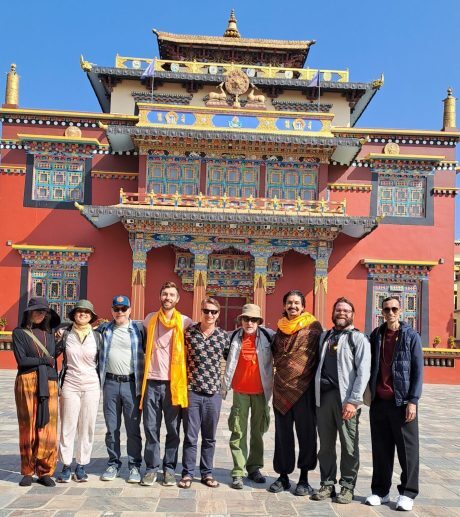
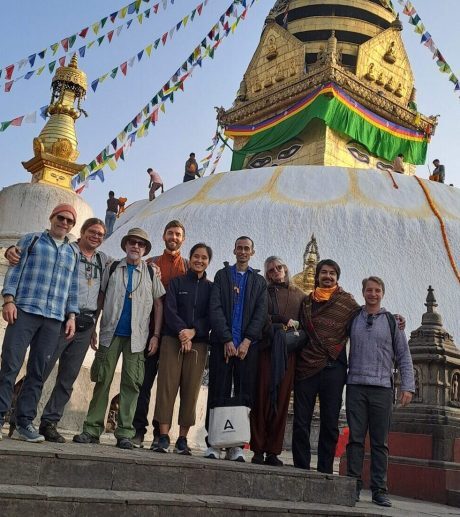
December 25, 2024
The Teachings of Oneness in the Bhagavad Gita Course
Four Live Zoom Classes | Every Saturday from February 1 – February 22, 2025

The deeper teachings of the Bhagavad Gita are often lost due to a warping of the text to suit the philosophical agenda of certain organized groups, no matter whether that warping is based on a dualist view or the ardent focus on devotion. As a result, the original teachings, which are nondual, are misunderstood. The true teachings of oneness in the Bhagavad Gita are usually misunderstood due to the complex cultural aspects of the great scripture. These aspects are not only lost somewhat within India but also inhibit a foreigner’s understanding of the Bhagavad Gita, especially due to the lack of traditional knowledge and values in the modern world. By returning to tradition, in this case to the true nature of Sanatana Dharma (Hinduism), one will begin to comprehend the subtlety of the Bhagavad Gita, which will open the door to a deeper exploration of the nondual teachings within the scripture.
The Teachings of Oneness in the Bhagavad Gita Course is a comprehensive exploration and restoration of the original teachings of the Bhagavad Gita. Rooted in the tradition of Sanatana Dharma, the Bhagavad Gita is demystified in this course, revealing the genuine essence of living in harmony with one’s Dharma.
Class 1: Modules 1 and 2
Module 1: Introduction to the Bhagavad Gita
Explore the key concepts and principles of the Bhagavad Gita from the ancient traditional perspective of Sanatana Dharma. Understanding the traditional perspective and the key concepts and principles will guide us into a deeper comprehension throughout the following modules.
Module 2: The Foundations of Yoga in the Bhagavad Gita
We will explore the true nature of yoga as we find it in the Bhagavad Gita. I will explain the very ancient yoga far before the Bhagavad Gita that informs the scripture as we traverse the numerous forms of yoga, from the highest yoga to the importance of the yoga of surrender.
Class 2: Modules 3 and 4
Module 3: Who is the Hero of the Great War?
I will explain the importance of the Kurukshetra War, where the Bhagavad Gita takes place. To understand the importance of this war, we will explore the ancient philosophical teachings of Samkhya and Yoga alongside the traditional cultural systems that help resolve the debate between free will versus divine will.
Module 4: Yoga on the Battlefield of Life
The Kurukshetra War in the Bhagavad Gita represents a reflection of our own trials and tribulations in life. I will explain in-depth the nature of this battlefield and the path of yoga set out for each and every one of us to be the hero of our own story.
Class 3: Modules 5 and 6
Module 5: Transcending the Power of Maya
There are many misunderstandings of the concept of maya due to poor translations and a lack of spiritually intuiting the meaning correctly. I will explain what the concept of maya is within the Bhagavad Gita and the practices we need to employ to transcend its power so that we can abide in the oneness of Brahman, which is the Ultimate Reality of existence beyond God.
Module 6: Personal and Impersonal Love of the Divine
We can often get swept up with our own quest for enlightenment by yearning for the impersonal Brahman and neglect the need for our personal love of the divine through the tradition of the Devatas, which keeps us humbly human. I will explain the Devata tradition and why devotion is important for spiritual growth.
Class 4: Modules 7 and 8
Module 7: The Secret Path of Meditation and the Vision of the Divine
There is a secret path of meditation in the Bhagavad Gita that is not often discussed, nor is it usually considered one of the generic paths of yoga. But I will explain the concepts and practices of this secret meditation so that we can finally embrace the true vision of the divine, which was an unconventional revelation taught by Krishna that was a truth hard for Arjuna to accept.
Module 8: The Ultimate Yoga Beyond the Bhagavad Gita
An ultimate yoga reserved for the great sages exists once we comprehend the true teachings of the Bhagavad Gita. I will explain the teachings of this ultimate yoga and why it is a path found by few and only for those who are ready to taste the sweet nectar of the Truth.
We will finish the course by having a discussion on everything we have learned in the past four weeks.
Price and Schedule
Cost is $200 USD. Classes will be held at 11:00 AM – 12:30 PM US Eastern time. A Zoom invitation with password will be sent Thursday prior to each weekend. A video recording of the class will be sent to your email address and the link will be available for 30 days.
To secure your spot, please make payment in full with your name and email address to the following link.
Course registration is valid until January 30, 2025.
Refund PolicyAfter January 30, 2025, payment is nonrefundable. This refund policy is in place because from January 30, 2025 all of the course material will have been set for the expected number of attendees. There will be no refund after January 30 as a result.
COURSE REGISTERATIONJune 10, 2024
The Advanced Teachings of Taoism Course
Six Live Zoom Classes | Every Saturday from July 13 – August 17

Taoism, the most bastardized spiritual tradition and philosophy in the world, has fallen victim to misunderstanding, misinterpretation, and misinformation due to incorrect translations of the Tao Te Ching and Chuang-tzu texts. These flawed translations have stripped the original meanings, catering instead to a predominant Western audience with specific cultural sensibilities. However, these translations are inaccurate and distort the authentic meaning and intent of the sacred Taoist texts. Misinformation is eroding the essence of the Taoist tradition, creating an urgent need for clarity regarding what Taoism truly represents and what it means to be Taoist.
The Advanced Teachings of Taoism Course is a comprehensive exploration and restoration of Taoism. Rooted in the philosophy of nature, Taoism is demystified in this course, revealing the genuine essence of living in harmony with the natural way, the Tao.
Class 1: Modules 1 and 2
Module 1: Reclaiming Taoism
Explore Taoism from the ancient Chinese traditional perspective based on the two source texts, the Tao Te Ching and the Chuang-tzu. I will explain why classical Taoism is actually a lot different from how a lot of people think about Taoism today.
Module 2: The Metaphysical Framework of Taoism
For the first time ever recorded, I will explain the metaphysical framework, all the way from the undifferentiated reality to the manifest world. I go into how that universal unfolding is reflected in our very being, making the human being a reflection of the entire universe.
Class 2: Modules 3 and 4
Module 3: Taoism’s Critique of Confucianism and Socialization
We will explore how Taoism was actually a critique of Confucianism throughout the Warring States period of China. In doing so, I will dispel a lot of the false views around Confucius and Confucianism. I will explain why Taoism is the real natural system, which goes deep into its critique of how Confucius had this strange belief that by following his rules and regulations, that is what made us natural again.
Module 4: The Dissolution of Identity
Taoism’s ultimate aim is the dissolution of identity so that the undifferentiated Tao can make use of an individual. This is never spoken about in pop-Taoism for some reason, but from an ancient traditional perspective, Taoism is very similar to other nondual traditions throughout Asia. Though Taoism does differ slightly from the strict nondual traditions, it has a more holistic, integral teaching. I will explain in this module Taoism’s integral nondual approach.
Class 3: Modules 5 and 6
Module 5: The Immorality of Morality
I will explain the illusion of morality based on the teachings of Chuang-tzu and, as a result, why Taoism is an amoral tradition centered on nature and not governed by man-made morals. No one ever explores the amoral perspective of Taoism because most people don’t know about it or are afraid to speak about it candidly in the face of our moral systems. In understanding the amorality of Taoism in this course, you will have a roadmap to go beyond the illusions of good and evil to come closer to an understanding of true oneness, which is the goal of Taoism.
Module 6: The Politically Incorrect Nature of Taoism
This module covers the politically incorrect nature of Taoism and why a society stricken with political correctness is unnatural. I will explain some of the deepest, yet misunderstood stories from the Chuang-tzu text so that you can understand the natural amoral perspective of Taoism. I explain that Chuang-tzu himself had to also deal with the politically correct nonsense of Confucianism, as we do too in the modern world. As a result, I will use the teachings of Chuang-tzu to critique the modern politically correct attitude that is infecting innocent people’s minds in the present day.
Class 4: Modules 7 and 8
Module 7: Beyond Good and Evil
We will explore why Taoism believes our human nature is fundamentally good. In doing so, I will destroy the commonly held assumption that we are beasts from birth. I will explain this by using Taoism to analyze Confucianism, the Abrahamic faiths, and other Western traditions that believe we are beasts from birth.
Module 8: The Simple World vs. The Complex World
Moving constantly into a complex world is something Lao-tzu and Chuang-tzu warned us about. They knew if we fell for the artificial linguistic conventions and cultural frameworks, it would be hard to wrestle our awareness from these tools of partiality so that we could see the world as it truly is. I will explain in this module the subtle battle between the natural, simple world and the evolving, complex world. We will explore Lao-tzu’s teaching of the two desires and Chuang’s great undoing so that we can attune to the Tao.
Class 5: Modules 9 and 10
Module 9: The Art of Doing Nothing
The essential Taoist teaching of wu-wei can be a confusing concept for those who are addicted to doing. Modern teachers and students of Taoism are also puzzled by wu-wei, as we discover through many people adapting it to their own sensibilities. We need to understand wu-wei as it is. I will explain the different translations of wu-wei and how in essence all interpretations lead to nondoing.
Module 10: The Spontaneous Reality
The real world of the Tao is a spontaneous reality. The sage lives in this spontaneous reality. I will explain the nature of this spontaneous reality by delving into the Taoist concept of tzu-jan (naturalness), the illusion of thinking, mind seeking, and the hidden teaching of what thoughts would be without language. I will expand this knowledge through an exploration into the concept of the unsupported thought and how the unconscious linkage of thoughts create the identity.
Class 6: Modules 11 and 12
Module 11: Free and Easy Wandering in Oneness
I explain the ultimate teaching after wu-wei, xiaoyao you (free and easy wandering in oneness). Xiaoyao you has been mentioned in the past but never in its truest context. It is the final teaching on the Taoist path, and the spiritual path in general from Chuang-tzu’s perspective. This teaching is related to what Taoists call the Zhenren (genuine person/enlightened sage). I will explain why Zhenren is related to free and easy wandering through stories from the Chuang-tzu that mine the deepest revelations throughout all of Eastern thought.
Module 12: Concluding Thoughts and Q&A
We will finish the course by having a discussion on everything we have learned in the past six weeks.
Price and Schedule
Cost is $200 USD. Classes will be held at 11:00 AM – 12:30 PM US Eastern time. A Zoom invitation with password will be sent Thursday prior to each weekend. If you cannot attend a class, a video recording of the class will be sent to your email address.
To secure your spot, please make payment in full with your name and email address to the following link.
Course registration is valid until July 10, 2024.
COURSE REGISTERATION Refund PolicyAfter July 10, 2024, payment is nonrefundable. This refund policy is in place because from July 10, 2024 all of the course material will have been set for the expected number of attendees. There will be no refund after July 10 as a result.
April 30, 2024
The Seeker’s Mind

Often people want to learn and be creative, but they can’t focus for long periods of time and have no creative calling. This is common in our world today because we are so distracted. A mind constantly distracted will only seek more distraction because it is used to overstimulation. A distracted mind is like the ocean waters during a hurricane. On the other hand, a tranquil mind is like a pristine lake on a bright and sunny day. A motionless lake is transparent and reflective; you can see right down into its ultimate depth.
Our attraction to entertainment is destroying our innate ability to learn and be creative. Constant entertainment pacifies our mind. As a result intelligence is undervalued in our world, and creativity is thought of as something isolated to artists. The truth is eclipsed when we overfeed our mind with entertainment and poor food, forget to exercise, and just allow our thoughts and emotions to run amok. We become desensitized to the world around us and even ourselves, as we vicariously watch the whole world implode into unconsciousness.
Becoming more conscious of our inner and outer landscape allows us to learn and create at an optimal level. However, developing expert skill and reaching peak performance also depends on having the discipline and dedication for cultivating more intelligence and creativity, which will enhance your overall life. The irony is that many people who just go through life with no discipline and allow life to push them around are often arrogant about what they “think” they know and are incapable of learning as a result. They have not been humbled by life, so they continue to fight and be jaded. We are unable to learn when we are rendered unconscious by overstimulation of body and mind.
Cultivating Intelligence
Cultivating intelligence requires us to finally admit that we don’t really know anything. This is not a desirable position to be in in our world. We always want to save face by appearing to be intelligent. We often speak about topics and current affairs that we really don’t know anything about because we are paranoid that not knowing about something opens us up for criticism. But it is highly unintelligent to speak on matters we don’t really know about. Even current affairs are issues we shouldn’t speak about. Just because the news broadcast or newspaper gives us information on certain matters doesn’t mean we actually know what’s really going on. It’s unintelligent to formulate opinions on such scarce information without diving deep into the subject.
By nourishing the little things in our life we realize that we actually don’t know much, but on the flip side we are eager to learn. As a result we are not afraid to admit that we don’t know because that is the most honest and intelligent position to be in. We learn to be truly humble and not at all worried about not knowing, and as a result we approach life as explorers rather than know-it-alls. We embrace the seeker’s mind, meaning we remain a student of life. Having a seeker’s mind cultivates intelligence, which allows us to grow psychologically. Our minds become more articulate and clear, which becomes evident in our speech and emotional conduct. If we pretend we know, we cannot learn. And if we cannot learn, we cannot grow. Learning is the fertilizer for growing our intelligence. Learning is just like nature because it is nourishing, moving, and growing—it’s alive! Learning itself grows our mind, and if we are growing, then we are fully alive.
Our habit to try to be a know-it-all cuts us off from the feeling of growing and being alive. Once we think we know something categorically we stagnate and disconnect from our mind’s natural growth. Our all-knowing habit makes us come across as an authority on certain matters, but we forget that information always changes and knowledge deepens as our mind grows. By remaining a student and continuing to learn throughout our lives, we understand more and continue to grow. Even when we think we aren’t learning, life is teaching us, as philosopher Jiddu Krishnamurti explains:
“There is no end to education. It is not that you read a book, pass an examination and finish with education. The whole of life, from the moment you are born till the moment you die is a process of learning. Learning has no end and that is the timeless quality of learning.”
There should be no end to learning. If you are humble enough to remain a student your growth will be continual, and as a result your mind will cultivate a keen intelligence that has a deep understanding of self, others, and life. This process should continue to the day we die, as Mahatma Gandhi said, “Live as if you were to die tomorrow. Learn as if you were to live forever.” Learning nourishes this deep intelligence, making us more aware with a profound sense of understanding. Deep intelligence is something we all can have if we are willing to do the work. We are losing contact with intelligence because of the toxic habits that keep us distracted. Instead of diving headfirst into distractions, we need to go old school with simple habits that have become background noise in our modern world.
Reading as a Discipline
Reading books is essential for learning. Books are a super fuel for cultivating intelligence. But in our modern world books have taken a backseat to the toxic habit of watching screens. We watch television and watch on our smartphones and computers. It’s a constant observation of everybody else’s lives but our own. When we watch whatever it may be, including mindlessly surfing the internet and scrolling the social media feeds, we zone out in a stupefied zombie state. As a result, watching too much stuff on screens makes us stupid.
Watching screens doesn’t require a lot of our attention. The more we partake in watching activities the less our mind can concentrate and think clearly. When people have these types of habits it is hard for them to complain about their lives. How can any of us complain if we are not making our lives conscious?
We need to take our power back. Instead of watching stuff on screens mindlessly, we need to turn to reading books, preferably physical books. Turn the act of reading into a discipline. Reading itself requires an ability to focus for extended periods of time, so a daily discipline of reading cultivates focus and concentration. As a result we have an improved ability to focus and concentrate that can be applied to anything. So buy a bookcase and fill it full of books. Not fiction books, but nonfiction books on philosophy, science, religion, art, and so on. To cultivate intelligence you need to tackle the big subjects that will give you a clearer understanding of life.
Make your reading discipline a daily ritual. When it is time for digital sunset, switch over to a physical book. I like to read at least three hours a day, usually after digital sunset, but if I’m not writing in the morning I will read then. Extended periods of reading are similar to meditation. Your mind is focused on reading, and as a result you enter a state of effortlessness, where time disappears. The added bonus of this is that at the same time you are cultivating intelligence.
The evidence that reading makes you more intelligent can be found in your expanded vocabulary. Your ever-growing vocabulary enables you to be more specific in conversations and writing, so you can articulate ideas in a way people truthfully understand. This ability is what attracts us to intelligent people, who are usually well read. Comedian and actor Bryan Callen is a voracious reader, and he inspired illusionist David Blaine to read more. As he explained to Blaine, “The difference between the people you admire and everybody else is that the former are the people who read.”
We should not neglect our ability to be more intelligent. The key is to remain a student without becoming clever. Even if you believe you know something categorically, that understanding will likely change over time and you with it. The more we cultivate intelligence, the better creators we will be.
SHAREMarch 31, 2024
The Cult of Comparison in the West
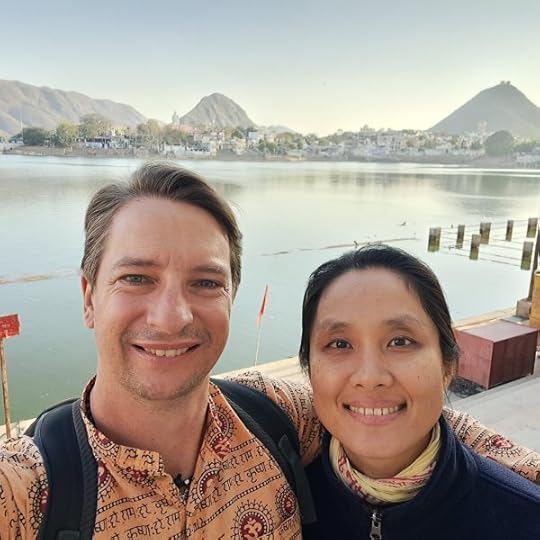
People in the West often cry and whine about some perceived privilege others have. But not in India and many countries throughout Asia. This cult of comparison has infected the hearts of many in the West, which is a special type of sickness stemming from a trained tendency towards competition and comparison. What an immature society and culture we have created in the West, so sick with jealousy and envy. But, astonishingly, there is always an insane justification for such a mental illness for those infected by this disease. Luckily, as I said, places such as India generally are not victims of such immaturity. In contemplating this cult of comparison, I think about my restaurant waiter friend in Pushkar. He is quite the character. Every day when I would see him, I would ask how he was doing. He would always reply, “This is a perfect life.” Some may say, How can he be so content “just” being a restaurant waiter? Well, he wasn’t sold on the illusion of the American dream, where one must be “special” in order to be validated by others and society at large. Isn’t it silly that we feel we need to be validated by the world instead of being content with who we are naturally?
Often, those who work their whole lives to gain that validation realize that it is not an American dream but rather a nightmare, and the torture on their souls in chasing this illusion leaves scars on their hearts that, in most cases, are irreversible. My friend, on the other hand, doesn’t even know what the American dream is and has no idea that people outside of India try so hard to be noticed and validated. He can’t grasp the concern about trying to be special. His contentment arises from not having such illusions drilled into him daily by a society and culture that does not care for you. He is not “just” a restaurant waiter but rather a brilliant restaurant waiter. He doesn’t need millions of dollars, loads of unnecessary material possessions, or validation from others. Why? Because he is content with his plight in life, and nothing is more fulfilling than being content with where you are in life. He has no idea of specialness, so, as a result, he has no desire to be somebody special. He is not looking over the fence or scouring the social media feeds for what others have and what he apparently lacks because he has no desire to measure his life against others.
His liberated content state of mind we can all have if we accept where we are in life, and if that needs to change, then do something about it rather than measure your life against others. Take ownership of your life and realize that in most cases, a lotus flower indeed grows out of the mud, but that doesn’t make that lotus flower special; rather, it has its own unique path in life if you allow your life to grow as it intended without comparing your path to others. These are the lessons one can learn from being away from cultures that continually promote lack due to the preposterous idea that you are not good enough. But when you realize you aren’t more special than anyone else, you realize you are good enough as you are and that this is truly a perfect life when you stop complaining about privilege and comparing your life to others. When you stop complaining or see no need to complain like my friend, then you come to the realization that the real privilege is to be alive and breathing in this moment together. What a blessing we all have to be graced with the amazing lives we share together, exactly in our right place, as naturally ordained by the Ultimate.
SHARE


